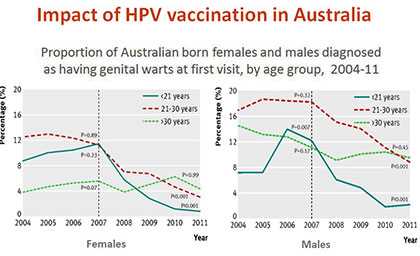Prioritization
When developing a roundtable, the first step should be establishing HPV vaccination as a priority. Facing competing priorities and a heavy workload, partners sometimes need to hear specific information about why HPV vaccination should be a priority for their organization. Show them that there are opportunities for big wins around HPV activities and that many lives will be saved!
When communicating with other partners and other stakeholders, use the following elements/messages to convince them to prioritize an HPV vaccination focus.
- Potential for high impact: HPV vaccination is reducing HPV disease
Every year, about 2 million women require some kind of colposcopy with a number of biopsies. From those biopsies, there are about 1.4 million new cases of low-grade cervical dysplasia diagnosed in the U.S. every year. In addition, there are about 330,000 new cases of high-grade cervical dysplasia annually. Women with high-grade cervical dysplasia require either a LEEP procedure or a cone biopsy. - Data on state performance:
Big opportunities to improve vaccination rates
Evidence gathered across the globe documents how high HPV vaccine coverage can drastically reduce the prevalence of HPV disease in a relatively short period of time. Check out this example from Australia [9 pages].

- Presence of strong national support: Momentum and support from National HPV Vaccination Roundtable, CDC Immunization, CDC Cancer, NCI
In recent years, CDC has awarded an unprecedented amount of money to various national partners in support of HPV vaccination activities. These activities are happening on many levels, from the grassroots with clinicians making practice-wide changes daily to big picture as organizational priorities as organizational priorities are set to increase HPV vaccination rates. Predominate cancer groups such as MD Anderson, the American Cancer Society, and the National Cancer Institute are leading the charge of normalizing HPV vaccine as a cancer prevention tool.
- Page last reviewed: November 15, 2016
- Page last updated: November 15, 2016
- Content source:


 ShareCompartir
ShareCompartir